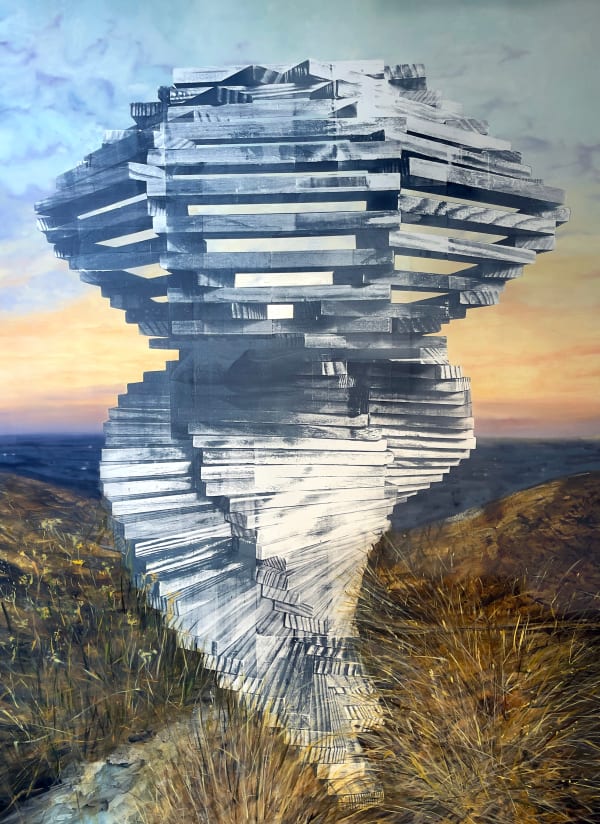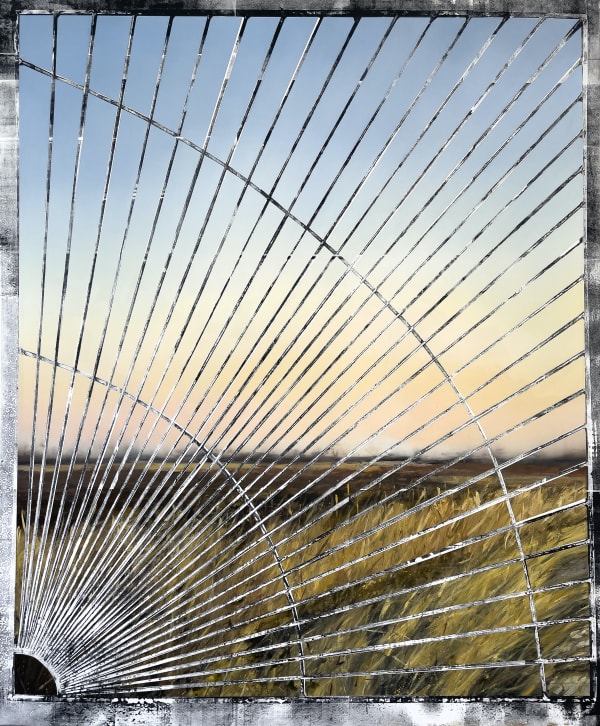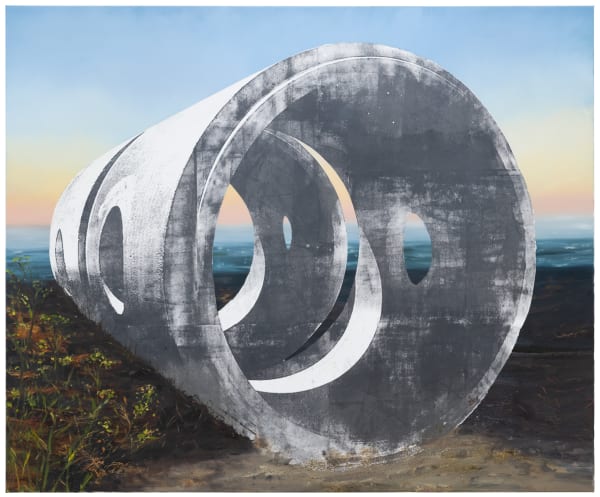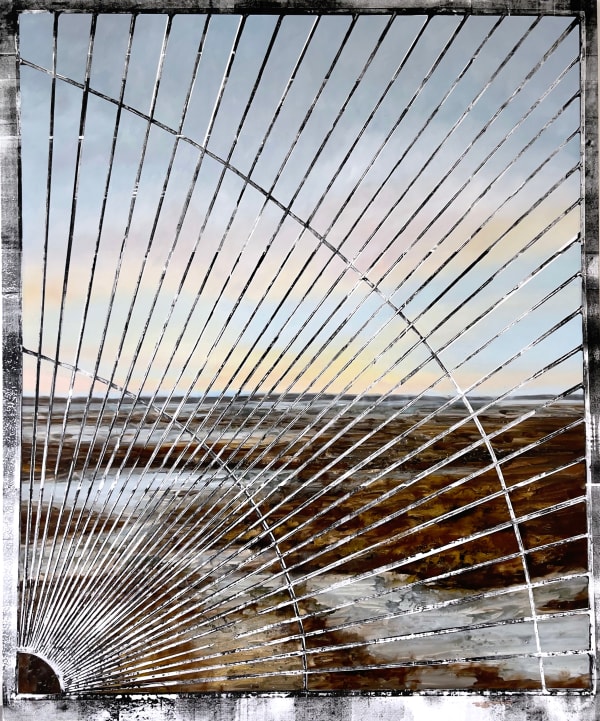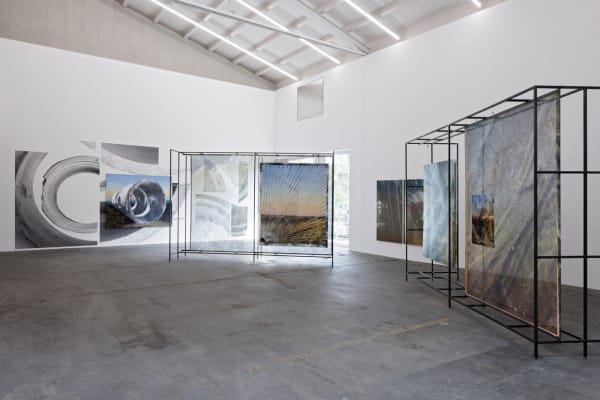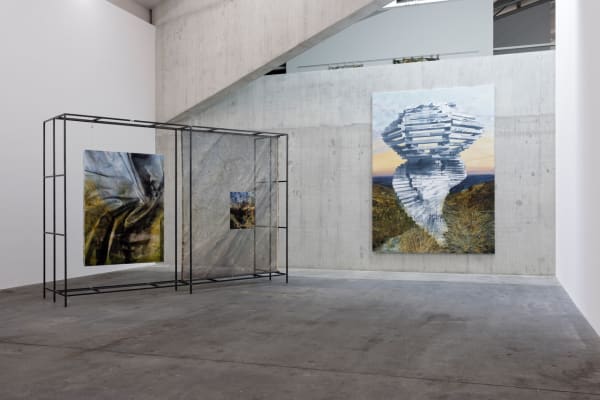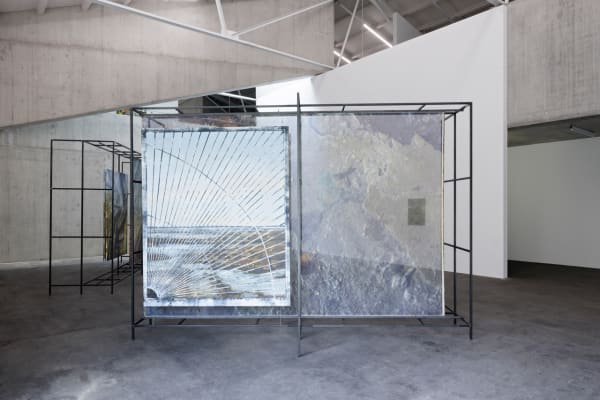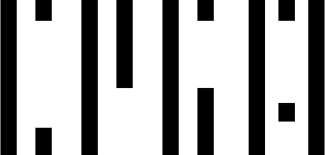Eva Nielsen: IN BETWEEN - Between No More and Not YetKunsthaus Baselland
Basel
The in-between can take many forms—temporal, spatial, conceptual, political; it can be a space of possibility, a moment of transit, a right now and then no more.
Eva Nielsen mentioned in an interview that she grew up with printing techniques, which may explain her affinity and almost natural approach to screen printing and superimposition in general. And yet there is so much more to her paintings, which inscribe themselves into existing spaces on a number of levels while simultaneously forming their own spaces. Whether wallpaper prints that only protrude a few millimeters from the wall, painted canvases installed on the wall in various sizes, or sculptural structures placed in the center of the room, Eva Nielsen’s paintings create painterly spaces within a space. Architectural or sculptural fragments can often be seen in her works. The images evoked within them can be as complex as the viewers themselves: art-historical quotations from Land Art artists of the 1960s and 1970s, ruined or unfinished buildings, remnants of war along stretches of coastline, sculptural arrangements, openings and transitional elements are just as present as landscapes in which shadowy figures appear, lying dreamily in the grass, gazing into the distance. But there is no definite interpretation. Above all else, what Eva Nielsen is creating in these superimpositions over paintings - which result in these perspectives that resemble landscapes and contextualize the architectural fragments while simultaneously portraying them as floating freely in space—are new spaces for thinking and seeing. She offers the opportunity to experience and follow a non-linear narrative. For despite these memories of the familiar, her work depicts something that has not yet been experienced.

